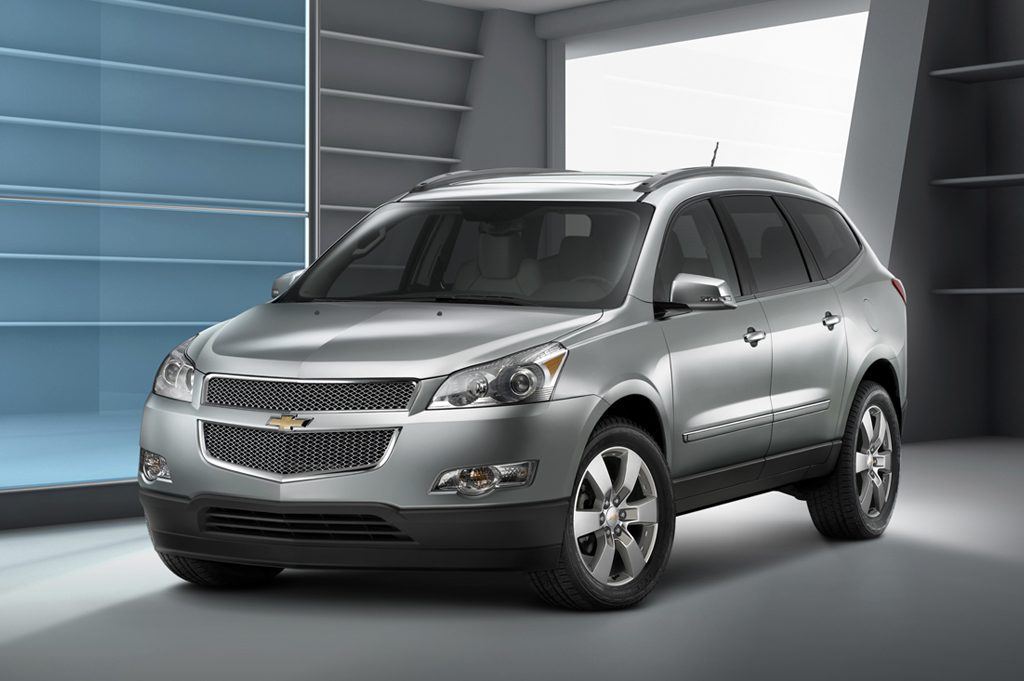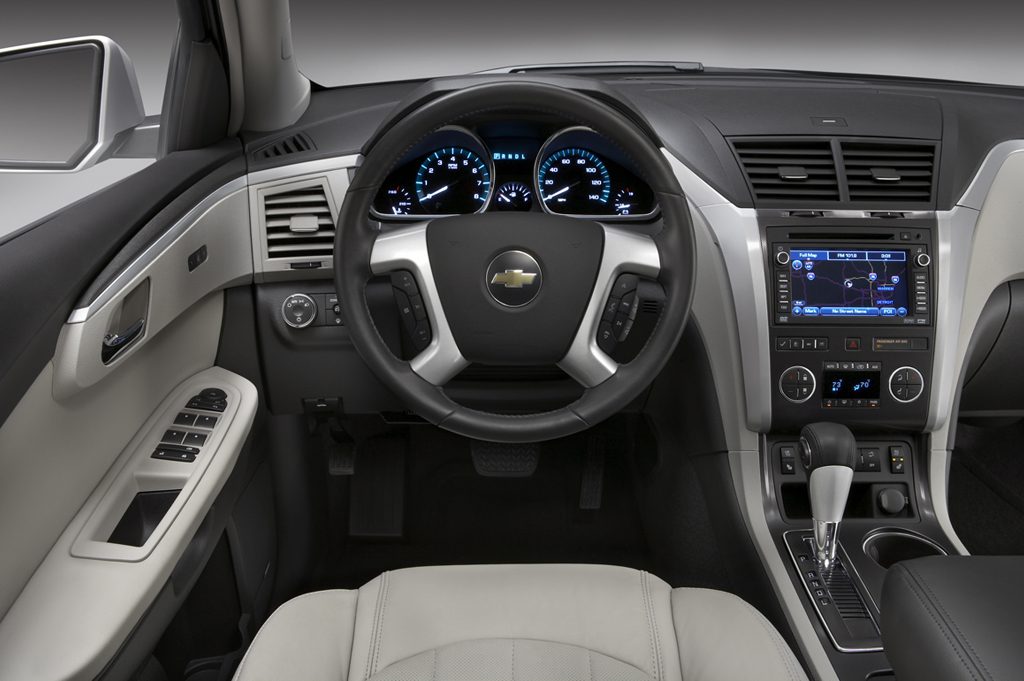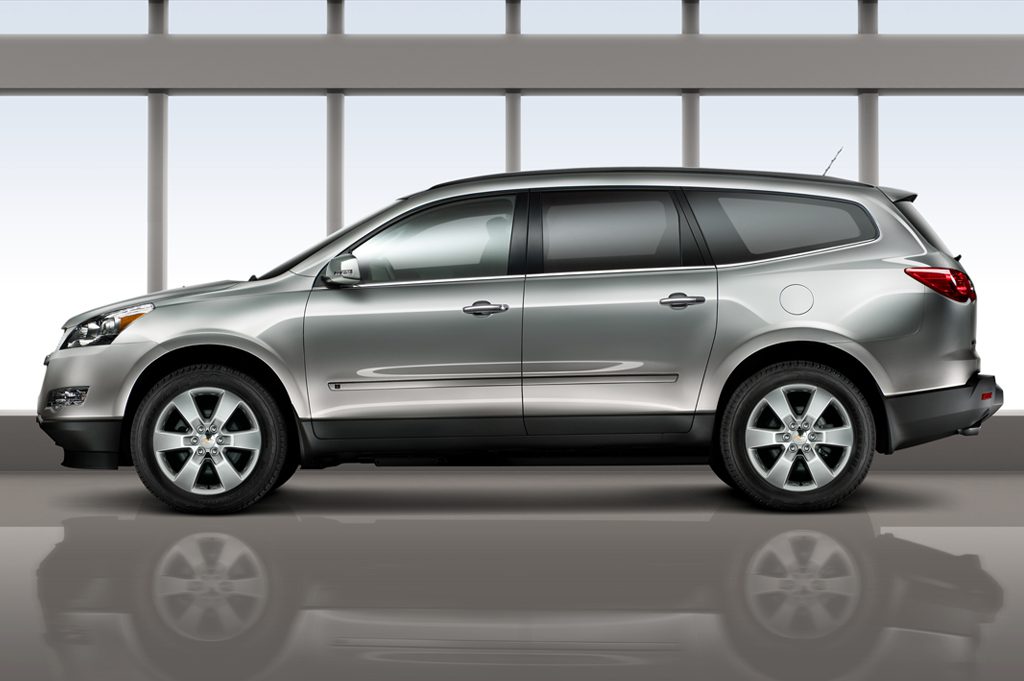| Midsize SUV; Built in USA |
|
|
| Good condition price range: $8,200 – $31,900* |

2009 Chevrolet Traverse Front

2009 Chevrolet Traverse Rear

2009 Chevrolet Traverse Interior

2009 Chevrolet Traverse Profile
| Pros: |
|
| Cons: |
|
With seemingly little compromise except for a slightly downgraded interior, Chevrolet’s version of General Motors’ midsize crossover quartet is arguably the strongest value. Traverse offers space, power, and decent handling in a Best Buy (2009-12)package that looks and feels more expensive than it is-new or used. Put this one on your shopping list.
Overview
New for 2009, Chevrolet’s Traverse was the first eight-passenger crossover SUV from General Motors’ volume division. Traverse shared its basic midsize design with the Buick Enclave, GMC Acadia, and Saturn Outlook, but the Chevrolet version differed in pricing, features, and details. Three rows of seats were standard. The second row included either bucket seats or a bench, for a total passenger capacity of seven or eight, respectively. In the entry-level LS and mid-grade LT models, power came from a 281-horsepower 3.6-liter V6 engine that teamed with a six-speed automatic transmission. Top-level LTZ models included a standard dual exhaust system that allowed the V6 engine to make 288 horsepower. Maximum towing capacity was 5200 pounds. Traverse was available with either front-wheel drive or all-wheel drive. Standard safety equipment included antilock brakes, traction control, an antiskid system, curtain side airbags, and front side airbags. The Traverse came in the single, four-door wagon body style of its corporate cousins. Standard wheels held 17-inch tires, with 18-inch and 20-inch wheels available-the 20-inch wheels were standard on LTZ. Available features included DVD entertainment, rear climate control, leather upholstery, a navigation system, remote engine start, satellite radio, rear obstacle detection, and a rearview camera. With the Traverse, Chevrolet competed against the Honda Pilot, Mazda CX-9, and Toyota Highlander.
Yearly Updates
| 2010 Traverse Little changed on the Traverse for 2010, apart from a USB port added to premium audio systems to connect portable music devices. OnStar version 8.2 for communications and emergency use now was available. As part of corporate restructuring, the Saturn division faded out of the GM picture in 2010, along with its Outlook model. |
| 2011 Traverse The 2011 Chevrolet Traverse was largely unchanged. |
| 2012 Traverse There were no significant changes to the 2012 Chevrolet Traverse. |
| 2013 Traverse For the first time since its model-year 2009 debut, Traverse saw some substantial changes. The exterior styling got a freshening, and the interior was almost completely redesigned. The chassis and drivetrain, though, carried over from 2012. |
| 2014 Traverse For 2014, Traverse gained available lane-departure warning and forward-collision warning. |
| 2015 Traverse The Chevrolet Traverse was mostly unchanged for 2015, save for the addition of Siri Eyes Free functionality for Apple iPhone users and text message support for other smartphone users. |
